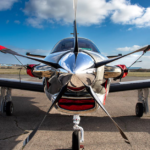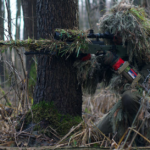What’s a Bogey in Top Gun? Unveiling the Intriguing Terminology in the Iconic Film
What’s a Bogey in Top Gun? Unveiling the Intriguing Terminology in the Iconic Film
When it comes to iconic films, Top Gun is undoubtedly at the top of the list. This action-packed 1986 movie, directed by Tony Scott and starring Tom Cruise, introduced audiences to the thrilling world of naval aviation. Along with its fast-paced dogfights and heart-pounding soundtrack, Top Gun also popularized a unique terminology that continues to intrigue fans to this day. In this article, we will uncover the meaning behind one of the most commonly used terms in the film – “bogey.”
The Origins of “Bogey”
The term “bogey” in the context of aerial combat can be traced back to World War II. Originally, it was used by British pilots to refer to unidentified aircraft, often enemy planes. The word “bogey” itself is believed to have originated from the Scottish term “bogle,” which means a ghost or a phantom. This connection highlights the mysterious nature of an unidentified aircraft during a dogfight.
Bogey in Top Gun
In Top Gun, the term “bogey” is used extensively during the intense aerial combat sequences. It refers to an enemy aircraft that is identified but has not yet been engaged or determined to be hostile. When a bogey is spotted, the pilot will notify their fellow pilots by broadcasting the position and heading of the aircraft.
During the film, we see Maverick, played by Tom Cruise, engaging multiple bogeys in thrilling dogfights. The use of the term heightens the suspense and adds to the overall excitement of the action sequences. It also helps the audience understand the dynamics of the combat and the constant surveillance required in naval aviation.
The Significance of “Bogey”
In addition to its practical use in the film, the term “bogey” holds particular significance within the context of Top Gun. It symbolizes the constant presence of danger and the need for vigilance in the world of naval aviation. The unidentified enemy aircraft, or bogey, represents the unknown and the potential threats that lie ahead.
Furthermore, the use of specific terminology such as “bogey” adds an air of authenticity to the film. It showcases the intricacies and specialized language used by pilots, creating a more immersive experience for the audience.
The Legacy of Top Gun’s Terminology
Top Gun’s impact on popular culture cannot be overstated. The film not only influenced the aviation industry but also left an indelible mark on everyday language. Terms like “bogey” and “buzz the tower” have become widely known, even to those who have never watched the film.
Top Gun’s enduring legacy is demonstrated by the upcoming sequel, set to release in 2022. Titled “Top Gun: Maverick,” this highly awaited film will undoubtedly introduce a new generation to the iconic terminology and excitement of naval aviation.
In Conclusion
Top Gun’s use of captivating terminology, such as “bogey,” adds depth and authenticity to the film. The origins of the term from World War II, coupled with its significance within the context of the movie, make it an integral part of the Top Gun experience. Whether you’re a dedicated fan or a newcomer to the film, understanding the meaning behind “bogey” enhances the enjoyment and appreciation of this iconic piece of cinema.
FAQs
1. What is a bogey in Top Gun?
A bogey in Top Gun refers to an unidentified aircraft that could potentially be hostile.
2. How is “bogey” different from “bandit”?
While both terms are used to refer to enemy aircraft, “bogey” indicates an unidentified aircraft, whereas “bandit” specifies a confirmed hostile aircraft.
3. What is the significance of the term “bogey” in aerial warfare?
In aerial warfare, the term “bogey” alerts pilots to be cautious and maintain a high level of situational awareness, especially when encountering unknown aircraft.
4. Are there any other terms used to describe enemy aircraft in Top Gun?
Yes, in addition to “bogey” and “bandit,” the term “hostile” is also used to describe enemy aircraft in Top Gun.
5. How do pilots identify a bogey in Top Gun?
Pilots identify a bogey by using onboard radar systems, visual observations, and communication with other aircraft or ground control. These methods help in determining whether the aircraft poses any threat.
6. Can a bogey be friendly or neutral?
Yes, a bogey can be friendly or neutral. It simply means that the aircraft is unidentified at the time, and further investigation is required to determine its intentions.
7. What actions do pilots take when they encounter a bogey?
When pilots encounter a bogey, they generally track and monitor the aircraft’s movements while attempting to establish positive identification. Based on the circumstances and rules of engagement, they may take defensive or offensive actions if necessary.
8. Are bogeys encountered in real-life aerial combat situations?
Yes, bogeys are encountered in real-life aerial combat situations. Aircraft and pilots are trained to respond appropriately to unidentified aircraft by following established protocols and rules of engagement.
9. How does the term “bogey” contribute to the tension in Top Gun?
The term “bogey” contributes to the tension in Top Gun by highlighting the constant threat of enemy aircraft. It keeps the characters on edge, aware that any unidentified aircraft could potentially be a hostile threat.
10. Can non-pilots also use the term “bogey” in everyday conversation?
Yes, the term “bogey” has transcended its military origins and is commonly used in everyday conversation to refer to an unknown or suspicious entity or object.




































